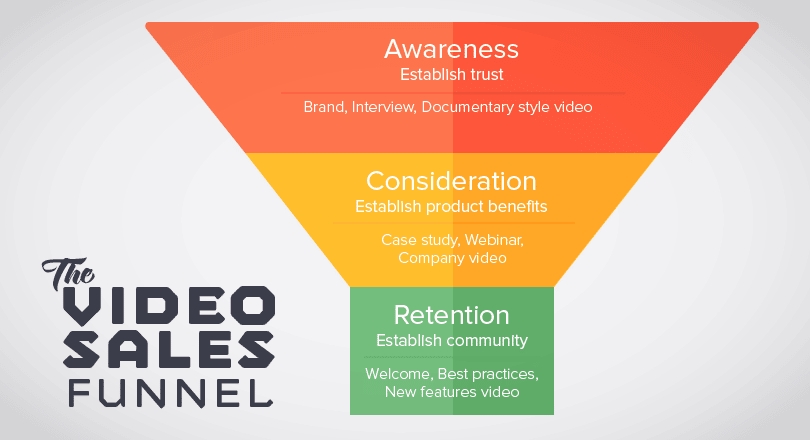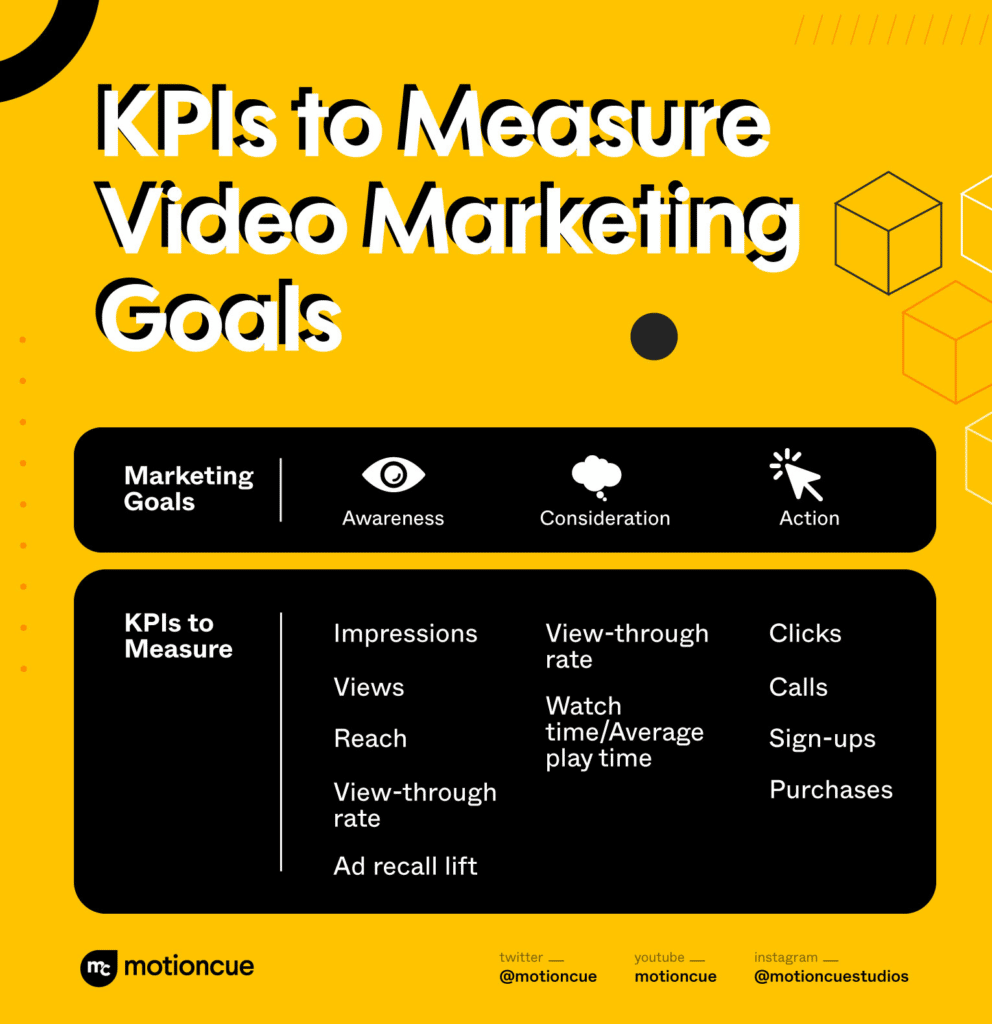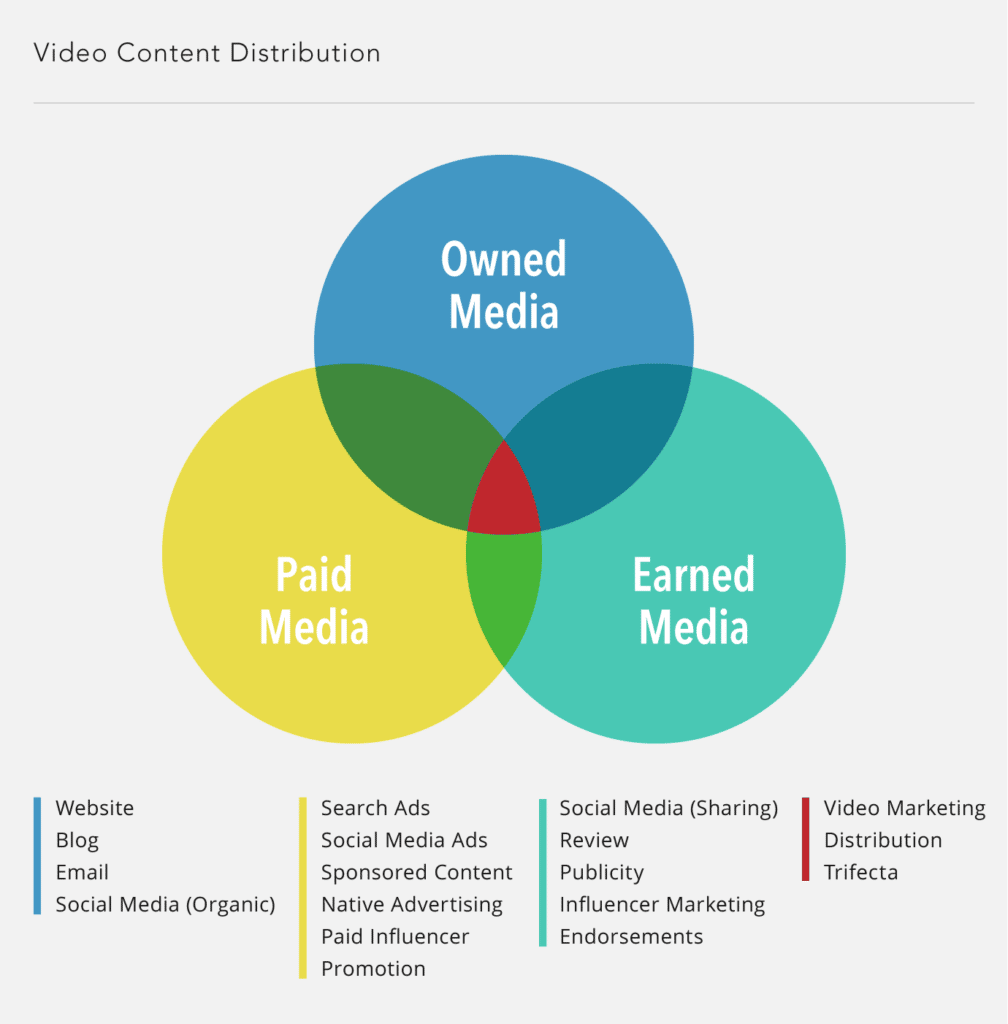When it comes to effectively driving awareness and engaging with your target audience, video marketing makes a whole lot of sense. There are many different ways businesses can present their video assets — not only to position and promote their products/services but also to be educational.
Just as you would approach blogging for your business, adding videos into the mix is just as important. From picking out topics, determining presentation style, and implementing a cadence, figuring out how videos will align with each lifecycle stage is going to help your leads progress down the pipeline. This way, you are building with a goal in mind.

Before we dive into today’s blog post, let’s take a look at some video marketing ROI stats:
- 86% of marketers say video has increased traffic to their website.
- 83% say video has helped increase the average time their visitors spend on-page.
- 94% believe that video marketing has helped increase user understanding of their product or service.
- 78% have shown that video marketing has directly helped increase sales.
- 84% of marketers say video has helped them generate leads.
Plan and execute your video marketing strategy
Just like anything else within your overall marketing strategy, you’ll want to break out specific tactics and ensure that they have their own game plan. That said, your video marketing strategy should be a tactical execution that lines up with your marketing strategy, which also contributes to the bigger picture of your business objectives.
Here is a simple example to consider:
- Business objectives: Increase revenue.
- Marketing strategy: Build awareness, attract and engage the attention of potential customers, and nurture them into paying customers.
- Video marketing strategy: Develop videos that will meet potential customers throughout their buying journey, further providing more in-depth analytics to ensure contextual relevance.
Once you identify what you’re trying to achieve, the next step is to break down your entire video marketing strategy into smaller implementations. At this stage, you have to be clear on the stories you want to tell within your videos and make sure they align with the content your target audience actually wants to watch.

As you research what topics you want to cover, don’t just guess what your audience wants. I suggest using a tool like SEMRush’s Keyword Magic. With this free tool, you can enter a seed keyword, and it will provide related keywords and data regarding each one. This way, you aren’t trying to mind-read to know what your audience is searching for — you can use data to help you make the best possible decisions. Check out their free keyword magic tool here.
You’ll also want to make sure that as you plan out all of your content pieces, you decide which of those will be in a video format and add it all into your content calendar. Doing so will help you stay organized and help outline the cadence to push out new videos. There are many different avenues you can venture down when it comes to the types of video content you’ll publish. Here’s a list of ideas to get you started:
- Tutorials
- Product-specific videos that showcase benefits and features
- Presentations (similar to webinars)
- Vlogs
- Interviews
- Testimonials and case studies
- Demos
- Events
- Live videos
- Personalized messages based on actions
Not a video-making genius? You don’t really have to be. Many freelancers are available for hire on Fiverr that can help you make a professional video for your company. What’s more, Fiverr makes sure that the content is completed to your satisfaction. Check out their many qualified freelancers here.
Identify specific KPIs you’ll measure
Make sure you have the right tools in place to capture data that will help provide you insights into what’s working and what isn’t. Being diligent with your data will help you figure out the best way to connect with your target audience — so nailing down the KPIs that will help you measure and track your progress will be critical to your success.
As I mentioned before, it’s essential to understand the buyer’s journey and insert videos to help further funnel leads into becoming paid customers. This analysis will make sure that the effort you put into creating videos moves beyond the awareness bucket. You want your videos to feel relevant so that people will actually take action and bring more than just a ‘view.’

Educate before pushing for a sale
Being helpful, adding value, and being an educational resource has become more and more important with videos. Many companies out there want every video to go viral, but that’s just setting yourself up for disappointment.
Instead, always focus on the problems you are solving, your expertise, the content your target audience cares most about, and then leverage all of these things to develop videos that will help you meet your goals. Videos that I’ve seen work well — from both large and small companies, even down to influencers — are the ones that position contextual value and relevance well before the sale itself.
Then, when it’s time to actually sell something, it feels much more natural because you’ve built credibility and trust. Be authentic and sensitive to the fact that people don’t want to be given sales pitches in every video, but they want to know what you can do to help them. As you help them, this creates a much more emotional and visceral effect that will drive action and impact your business.
Distribute your video content like a boss
There are many different ways you can distribute your content — however, the most obvious place to start is to make sure your videos are present wherever your target audience is. From there on, you can certainly test different channels to see how they work to gain any sort of momentum.
You can take three specific paths when it comes to making sure your videos get in front of the right audience: earned, paid, and owned.

More specifically, here are some of the pros and cons of each of these three paths as highlighted by LemonLight:
“Owned distribution is always a must, though, since you own and have complete control over these channels. There’s the lowest barrier to entry here and they also have the most opportunity due to how many different options for distribution you have. If one form of owned doesn’t work, another surely will. And, if your goal is to capture leads, using your owned channels is especially crucial.
Paid distribution is super important as well, but how much you can do will likely be limited by your cash resources. You’ll want to think more strategically about where your highest-converting audience is and dedicate most of your budget there. And because there are so many different forms of paid advertising even within one single channel, you want to test every channel and every type of distribution method. Until you know which will give you the highest return, hold back on spending your entire distribution budget.
Earned distribution, like owned, is free. You have relatively little to lose using it other than time and effort, but unlike owned and paid, the payoff can be drastically more unpredictable. From SEO efforts that boost your search presence, to building relationships with influencers you’ve never met, you never quite know what your ROI will be — it can be enormous or it can fizzle to an end. But don’t skip earned distribution altogether! Take a little more time to think strategically about which earned channels will help you accomplish your video goals.”
Wrapping it up
Don’t forget that you can leverage your other content pieces and repurpose them into video assets, as well. In other words, you won’t always have to push to research new topics and ideas before executing. You can simply look at which of your blog posts are the most popular and then turn them into educational how-to videos.
Finally, keep testing and using analytics to your advantage to consistently pump resources into the videos that are working well and driving engagement. After all, the more you test and the more data you collect, the better understanding you’ll have of where in the buyer’s journey videos make the most sense.
Disclosure: Please note that some of the links above are affiliate links. I only recommend products and services that I use and stand behind, and if you decide to try them, I will earn a commission at no cost to you. Doing so helps me run this blog and provide free content for you, my readers.






One Response